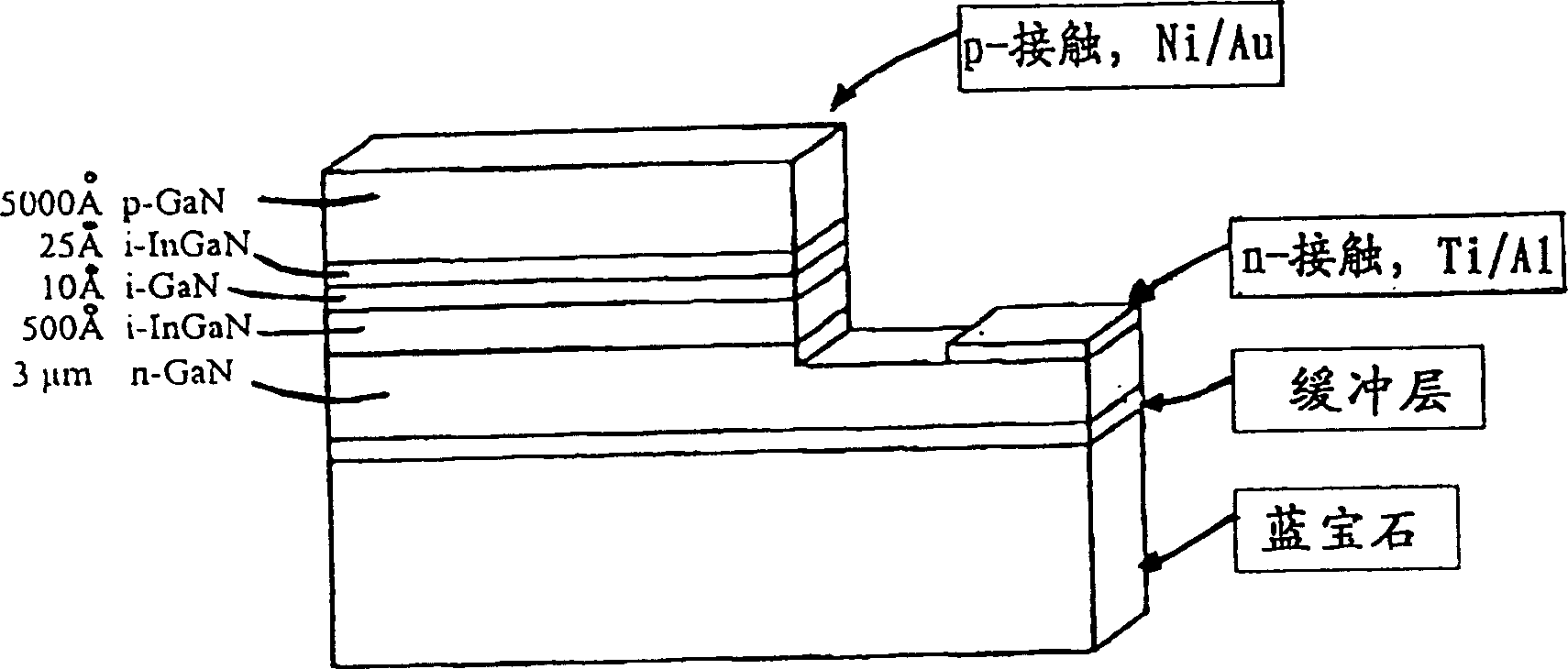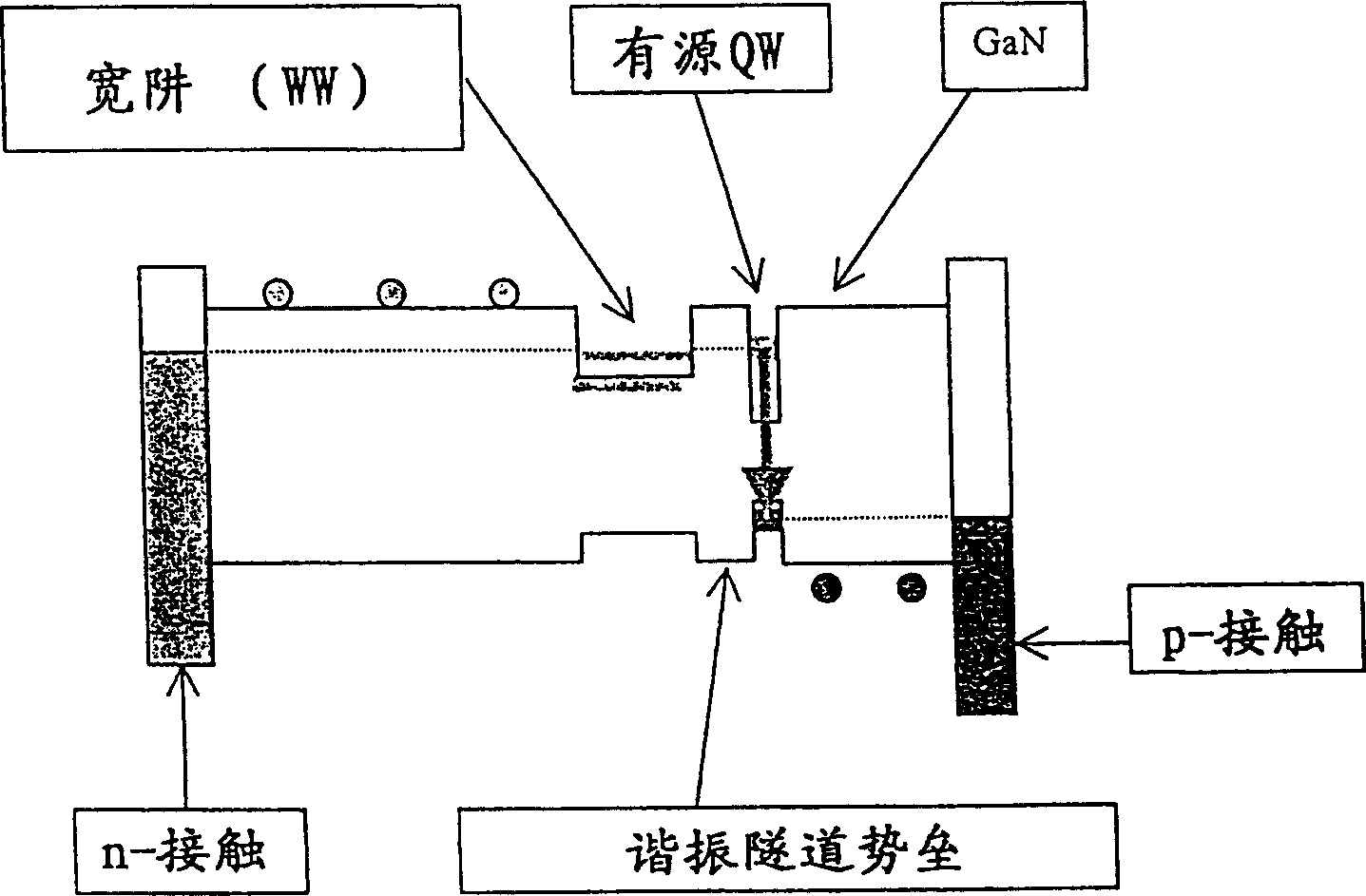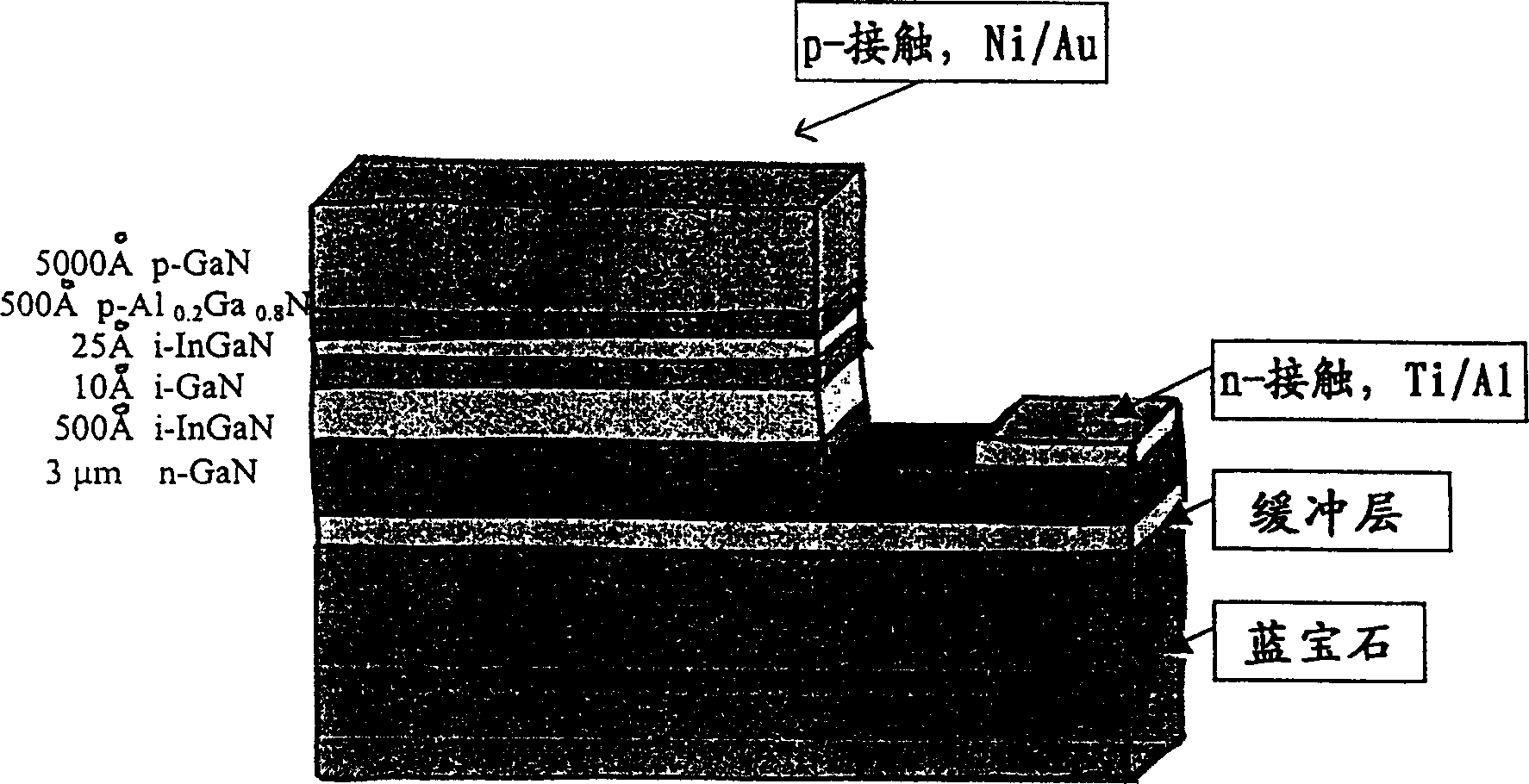LED with asymmetrical resonance tunnels
An asymmetric and tunneling technology, applied to the structure of the active region, nano optics, electrical components, etc., can solve problems that hinder the manufacture of high-efficiency LED devices
- Summary
- Abstract
- Description
- Claims
- Application Information
AI Technical Summary
Problems solved by technology
Method used
Image
Examples
Embodiment Construction
[0026] figure 1 The first structure is shown, which is a GaN blue LED design based on a double well system with asymmetric tunneling. The system includes two coupled wells: a wide well (WW) and an active quantum well (QW). These wells are coupled by a resonant tunnel barrier (RTB) that transmits electrons but blocks holes. Table 1 lists the parameters of the blue LED based on the first structure. Table 2 lists the parameters of the green LED based on the first structure.
[0027] #
[0028] #
[0029] image 3 A second structure similar to the first is shown, but with additional p-Al 0.1 Ga x-0.1 N electron blocking layer for further reducing electron flow leakage.
[0030] Figure 5 A third structure similar to the second structure is shown, but without the p-GaN layer.
[0031] p-Al 0.1 Ga x-0.1 The N electron blocking layer serves as a contact. This will reduce the thickness of the p-type layer, facilitate the injection of holes into t...
PUM
 Login to View More
Login to View More Abstract
Description
Claims
Application Information
 Login to View More
Login to View More - R&D
- Intellectual Property
- Life Sciences
- Materials
- Tech Scout
- Unparalleled Data Quality
- Higher Quality Content
- 60% Fewer Hallucinations
Browse by: Latest US Patents, China's latest patents, Technical Efficacy Thesaurus, Application Domain, Technology Topic, Popular Technical Reports.
© 2025 PatSnap. All rights reserved.Legal|Privacy policy|Modern Slavery Act Transparency Statement|Sitemap|About US| Contact US: help@patsnap.com



